Cornerstone Tiny Homes is a company that specializes in designing and building custom tiny homes. They offer a wide range of styles and sizes to fit the unique needs of their clients. Their homes are built with high-quality materials and are designed to be energy-efficient and sustainable.
If you’re looking for a unique living experience, then a tiny home might be just what you need. These small but functional homes are perfect for those who want to downsize or live more sustainably.
And with Cornerstone Tiny Homes, you can rest assured that your tiny home will be built with care and attention to detail.
One of the things that sets Cornerstone Tiny Homes apart from other builders is their commitment to sustainability. They use eco-friendly materials whenever possible, and their homes are designed to be energy-efficient.
This means that not only will you be reducing your carbon footprint, but you’ll also save money on utility bills in the long run. Another great thing about Cornerstone Tiny Homes is their consulting services.
If you’re interested in building your own tiny home but don’t know where to start, they can help. Their team of experienced professionals will work closely with you to ensure that your vision is brought to life.
It’s no wonder that Cornerstone Tiny Homes has received numerous awards and recognition for their innovative designs and commitment to sustainability. So if you’re looking for a high-quality, sustainable tiny home, look no further than Cornerstone Tiny Homes.

Benefits of Living in a Cornerstone Tiny Home
Lower Cost of Living
Living in a Cornerstone Tiny Home can be an excellent way to reduce your cost of living. The cost of building and maintaining a tiny home is significantly less than that of a traditional home.
You will save money on utilities, property taxes, and maintenance costs. Since the space is limited, you will also be forced to downsize your possessions, which means fewer expenses on furniture and other household items.
Minimalist Lifestyle
Living in a tiny home requires you to adopt a minimalist lifestyle. This means that you have to prioritize what is essential and let go of things that are not necessary.
It helps you declutter your life and focus on the things that matter most. A minimalist lifestyle can help reduce stress levels, increase productivity, and improve mental health.
Eco-Friendly and Sustainable
Cornerstone Tiny Homes are eco-friendly and sustainable due to their small size. They require less energy for heating, cooling, lighting, and other utilities compared to traditional homes.
Additionally, they use fewer resources during construction since they require less material for building. By living in a tiny home, you are reducing your carbon footprint significantly.
Mobility and Flexibility
One significant advantage of owning a Cornerstone Tiny Home is mobility and flexibility. You can move your house wherever you want without having to worry about selling or buying another property.
It gives you the freedom to travel around the country while still enjoying the comfort of your own home.
Reduced Carbon Footprint
Living in a Cornerstone Tiny Home reduces your carbon footprint by reducing energy consumption significantly. With fewer rooms to heat or cool down, there’s less need for air conditioning or heating systems running all day long like in larger homes with more square footage per person living inside them.
Efficient Use of Space
Cornerstone Tiny Homes are designed with efficiency in mind; every inch counts! The layout maximizes every bit of available space while still providing all the amenities needed to live comfortably.
The use of multi-functional furniture and storage solutions, such as hidden cabinets or built-in shelves, helps to create more space while keeping everything organized.
Many people have already made the switch to living in a Cornerstone Tiny Home and are enjoying the benefits that come with it. According to a survey conducted by The Tiny Life.
68% of tiny homeowners have no mortgage compared to only 29% of traditional homeowners. Furthermore, 55% of tiny homeowners have more savings in their bank accounts than traditional homeowners.
Also see: Tiny Homes You Can Pull With A Truck
Tiny Home Design by Cornerstone
Maximizing Space and Sustainability with Cornerstone Tiny Homes
Cornerstone Tiny Homes is a company that specializes in designing and building small footprint foundation homes that are both functional and stylish.
Unlike traditional tiny houses on wheels, their tiny homes are built on a foundation, providing a more permanent and sturdy structure.
With an emphasis on sustainability, Cornerstone uses eco-friendly materials and energy-efficient systems in their tiny home designs.
One of the popular designs from Cornerstone is the Longwood model. This tiny home features a spacious living area, full kitchen, and loft bedroom. Despite its small size, the Longwood model is designed to maximize space and storage.
The living area has large windows that let in natural light, making the space feel open and airy. The kitchen is equipped with modern appliances such as a refrigerator, stove, oven, sink, and plenty of counter space for meal preparation.
The loft bedroom is accessed via a ladder or stairs depending on your preference. It provides enough room for a queen-size bed along with some additional storage space.
The bathroom in this model includes a shower stall, toilet, sink vanity with mirror cabinet above it. Cornerstone offers various floor plans and designs to fit different lifestyles and needs.
They have single-level homes that are perfect for those who prefer not to climb stairs or multi-level homes for those who want more space but still want to live in a tiny home.
In addition to maximizing space inside their tiny homes through clever design features like built-in cabinets and foldable furniture pieces such as tables or beds;
Cornerstone also maximizes outdoor living spaces by including decks or patios where residents can relax outside while enjoying nature. Sustainability is at the core of Cornerstone’s philosophy when it comes to designing their tiny homes.
They use eco-friendly materials such as bamboo flooring or reclaimed wood for walls/ceilings/floors which reduces carbon footprint significantly compared to traditional building methods using new materials every time.
They also incorporate energy-efficient systems such as solar panels or geothermal heating/cooling systems to reduce energy consumption and costs.
Cornerstone Tiny Homes is a company that understands the importance of sustainability and maximizing space.
Their tiny homes are designed with both in mind, providing residents with a functional and stylish living space that is eco-friendly and cost-effective.
With their unique designs and emphasis on sustainability, it’s no wonder why Cornerstone has become one of the leading companies in the tiny home industry.
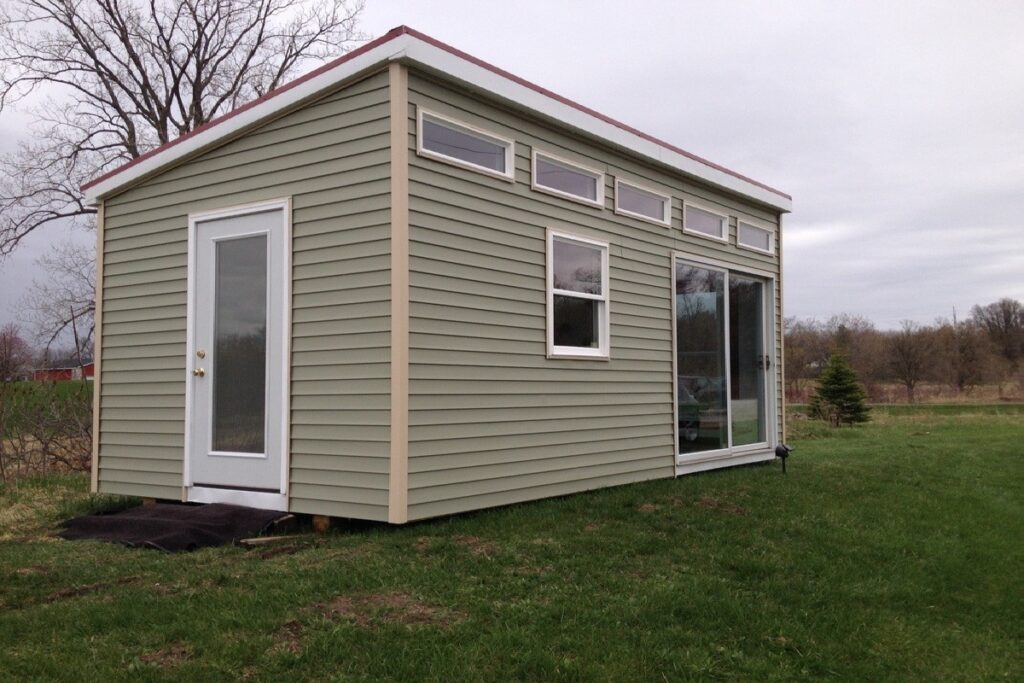
Customizing Your Cornerstone Tiny Home
One of the most significant advantages of owning a Cornerstone Tiny Home is the ability to customize it to fit your specific needs and preferences. With a variety of customization options available, you can create a home that is uniquely yours.
Floor Plans and Layouts
Cornerstone Tiny Homes offers several floor plans and layouts to choose from, each with its own unique features. Whether you prefer an open-concept design or more defined living spaces, there is a floor plan that will suit your needs.
Exterior Finishes
The exterior finish of your tiny home is one of the first things people will notice about it. You can choose from a variety of finishes, including wood siding, metal siding, and stucco. Each finish has its own unique look and feel, so be sure to explore all your options before making a decision.
Roofing Materials
Your choice of roofing material can have a significant impact on the overall look and feel of your tiny home. Cornerstone Tiny Homes offers several roofing materials to choose from, including asphalt shingles, metal roofing, and rubber roofing. Each material has its own benefits and drawbacks, so be sure to do your research before making a decision.
Window Styles
Windows are an essential part of any tiny home design as they provide natural light and ventilation while also adding visual interest to the exterior.
Cornerstone Tiny Homes offers several window styles to choose from, including casement windows, double-hung windows, and sliding windows.
Interior Customization Options
In addition to customizing the exterior of your tiny home, you can also personalize the interior by choosing from various customization options.
Kitchen Appliances
The kitchen is often considered the heart of any home. In a tiny home where space is at a premium, choosing the right appliances is crucial. Cornerstone Tiny Homes offers several kitchen appliance packages to choose from based on your cooking needs.
Bathroom Fixtures
The bathroom is another area where customization options abound. You can choose from a variety of fixtures, including sinks, toilets, and showers. Cornerstone Tiny Homes also offers the option to add a bathtub if desired.
Flooring Choices
The flooring you choose for your tiny home can have a significant impact on its overall look and feel. Cornerstone Tiny Homes offers several flooring options to choose from, including hardwood, tile, and vinyl plank.
Lofts and Storage Space
One of the most popular customization options for tiny homes is adding a loft or additional storage space. A loft provides additional sleeping space while also creating more living space below. Additional storage space can be added in various ways, such as built-in cabinets or shelves.
Working with Cornerstone Tiny Homes
When working with Cornerstone Tiny Homes to customize your home, you will work closely with their team to ensure that your customizations meet your specific needs and preferences. Their team has years of experience designing and building tiny homes and will provide guidance throughout the process.
Also see: Can Tiny Homes Be Built On A Foundation
Sustainable and Off-Grid Living with Cornerstone Tiny Homes
Cornerstone Tiny Homes offers sustainable and off-grid living solutions that are designed to promote self-sufficiency while reducing reliance on traditional utilities. The foundations of their tiny homes are built to withstand various weather conditions, ensuring durability and longevity.
Energy-Efficient Appliances and Solar Panels
One of the key features of Cornerstone Tiny Homes is the use of energy-efficient appliances and solar panels. These appliances are designed to reduce the carbon footprint of the homes while providing all the necessary amenities for comfortable living. Solar panels provide a renewable source of energy that can power everything from lights to heating systems.
Maximizing Space and Minimizing Waste
Another important aspect of Cornerstone Tiny Homes is their focus on maximizing space and minimizing waste. These tiny homes are designed with functionality in mind, utilizing every inch of space available for storage, living areas, and sleeping quarters.
This design philosophy helps to reduce waste by eliminating unnecessary clutter and ensuring that every item has a designated place.
Promoting Self-Sufficiency
Cornerstone Tiny Homes’ sustainable living solutions promote self-sufficiency by providing residents with everything they need to live comfortably without relying on traditional utilities. This includes water filtration systems, composting toilets, rainwater collection systems, and more.
By providing these resources, Cornerstone Tiny Homes empowers residents to take control of their own lives while reducing their impact on the environment.
Off-Grid Living
Off-grid living with Cornerstone Tiny Homes allows for a simpler, more environmentally conscious lifestyle. Residents can enjoy all the comforts of home without being tied down by traditional utility bills or infrastructure.
This type of lifestyle promotes a sense of freedom and independence that is hard to find in today’s world. Many people have already embraced this type of lifestyle by choosing to live in tiny homes built by Cornerstone Tiny Homes.
According to a recent survey conducted by Green Builder Media, 58% of tiny home owners reported a significant decrease in their utility bills after moving into their new homes.
Additionally, 68% of respondents reported feeling more connected to nature and the environment after making the switch to off-grid living.

Financing and Insurance for Your Cornerstone Tiny Home
If you’re considering purchasing a Cornerstone Tiny Home, one of the most important things to consider is financing and insurance. While tiny homes are often less expensive than traditional homes, they still require a significant investment.
In this section, we’ll explore financing options available for Cornerstone Tiny Homes, insurance requirements for owning a tiny home, and tips for finding the best deals.
Financing Options Available for Cornerstone Tiny Homes
There are several financing options available for those looking to purchase a Cornerstone Tiny Home. One option is to obtain a personal loan from a bank or credit union.
Personal loans typically have lower interest rates than credit cards or other forms of debt, making them an attractive option for those who can qualify. Another option is to finance your tiny home through the manufacturer.
Many tiny home manufacturers offer financing options that allow you to pay off your home over time. This can be especially helpful if you don’t have the cash on hand to purchase your tiny home outright.
Finally, some people choose to use crowdfunding platforms like Kickstarter or GoFundMe to raise money for their tiny home. While this may not be a viable option for everyone, it can be an effective way to get funding if you have a compelling story or product.
Insurance Requirements for Owning a Cornerstone Tiny Home
There are several things you need to consider. First and foremost, you’ll need liability insurance in case someone is injured on your property. You may also want to consider property insurance in case your tiny home is damaged or destroyed by fire, theft, or other events.
It’s important to note that not all insurance companies offer coverage for tiny homes. Be sure to do your research and find an insurer that specializes in insuring small homes.
Comparison of Financing and Insurance Options for Traditional Homes vs. Tiny Homes
When comparing financing and insurance options for traditional homes vs. tiny homes, there are some key differences to keep in mind.
For example, traditional home mortgages typically have lower interest rates than personal loans or financing options offered by tiny home manufacturers.
Additionally, traditional homes are often easier to insure because they’re considered less risky by insurers. Tiny homes, on the other hand, may be more difficult to insure because they’re often mobile and can be moved from one location to another.
Tips for Finding the Best Financing and Insurance Deals for Your Cornerstone Tiny Home
If you’re looking for the best financing and insurance deals for your Cornerstone Tiny Home, there are several things you can do. First, shop around and compare rates from multiple lenders and insurers.
This will help you get a sense of what’s available and what kind of rates you can expect. You should also consider working with a financial advisor or insurance broker who specializes in tiny homes.
These professionals can help you navigate the complex world of financing and insurance and find the best deals for your needs.
Finally, make sure you read all the terms and conditions of any financing or insurance agreements carefully before signing on the dotted line. This will help ensure that you understand exactly what you’re getting into and avoid any surprises down the road.
Potential Challenges in Obtaining Financing and Insurance for a Tiny Home, and How to Overcome Them
While there are many financing and insurance options available for tiny home owners, there are also some potential challenges to keep in mind.
For example, some lenders may be hesitant to finance a tiny home because it’s considered a non-traditional form of housing.
Similarly, some insurers may be reluctant to provide coverage for tiny homes because they’re not as well understood as traditional homes.
To overcome these challenges, it’s important to do your research ahead of time and work with professionals who specialize in tiny homes.
Also see: How Much Is A Tiny House In Georgia
Interior Design for Your Cornerstone Tiny Home
One of the biggest challenges is making sure you can fit everything you need into such a small space. However, with some creativity and smart design choices, you can make the most out of every inch of your tiny home.
Maximize Vertical Space with Built-In Shelves and Cabinets
One way to maximize space in your tiny home is by using built-in shelves and cabinets that go all the way up to the ceiling.
This will allow you to store items that are not used frequently or seasonally on higher shelves while keeping everyday items within reach. You can also use vertical storage for decorative purposes by displaying plants or artwork on high shelves.
Use Multi-Functional Furniture
Another way to save space in your tiny home is by using multi-functional furniture pieces. For example, a sofa bed can serve as both seating during the day and a comfortable sleeping area at night.
A table that folds away when not in use can provide extra counter space for cooking or working while taking up minimal floor space.
Choose Light Colors and Natural Materials
To create an illusion of more space, it’s best to choose light colors and natural materials for your tiny home’s interior design. Light-colored walls and ceilings reflect natural light better than dark colors.
Making the room feel brighter and more spacious. Natural materials like wood or bamboo add warmth and texture without overwhelming the small space.
Install Large Windows
Large windows are another great way to make a tiny home feel larger than it actually is. They let in plenty of natural light which makes the room feel bright and airy.
Additionally, having a view outside helps connect you with nature which is especially important when living in such a small space.
Incorporate Smart Storage Solutions
Smart storage solutions are essential when designing any small living space, including tiny homes. Consider using under-stair storage or hidden compartments to store items that are not used frequently. You can also use furniture with built-in storage, such as a bed with drawers underneath or a coffee table with hidden compartments.
Consider Using Sliding Doors or Pocket Doors
In a tiny home, every inch of space counts. That’s why it’s important to consider using sliding doors or pocket doors instead of traditional hinged doors. Sliding doors take up less floor space and can be used to separate different areas of the home without sacrificing privacy.

Building Your Own Cornerstone Tiny Home
Building your own Cornerstone Tiny Home is a great way to create a living space that perfectly fits your needs and preferences. With careful planning and attention to detail, you can design a home that is both functional and beautiful.
Researching Local Building Codes
Before starting the building process, it is important to research local building codes and regulations for tiny homes in your area. These regulations can vary widely depending on where you live, so it is important to do your homework before beginning any construction.
Hiring a Professional Builder or Contractor
If you are not experienced in building tiny homes, consider hiring a professional builder or contractor with experience in this area. They can help guide you through the process and ensure that everything is done correctly.
Selecting Materials and Tools
When building your own Cornerstone Tiny Home, selecting the right materials and tools is crucial. You want to choose high-quality materials that will last for many years while also being affordable. Some popular choices include reclaimed wood, metal roofing, and energy-efficient windows.
Creating a Budget
It’s important to have a clear budget in mind before starting the building process. Costs can quickly add up when constructing a tiny home, so it’s essential to plan ahead and stick to your budget as closely as possible.
The Rewards of Building Your Own Cornerstone Tiny Home
Building your own Cornerstone Tiny Home can be an incredibly rewarding experience. It allows you to take ownership over your living space while also providing a sense of accomplishment from completing such an ambitious project.
Also see: How Much Is A Tiny House In Virginia
Zoning Laws for Your Cornerstone Tiny Home
It’s important to understand the zoning laws in your area. Zoning laws vary by state and municipality, so it’s crucial to research the specific regulations in your area before purchasing a tiny home.
Minimum Square Footage Requirements
One of the most significant hurdles you may face when trying to legally place a tiny home on your property is minimum square footage requirements. Some areas have these requirements for homes, which may make it difficult to legally place a tiny home on your property.
For example, some municipalities require that all homes be at least 1,000 square feet or more. In such cases, you might need to obtain a variance or special permit from local authorities.
Special Permits and Variances
In some instances, you may need to obtain a special permit or variance to place a tiny home on your property, particularly if you plan to use it as your primary residence.
Obtaining these permits can be challenging and time-consuming since they often require extensive documentation and approval from various government agencies.
Placement Restrictions
Many areas have restrictions on where you can place a tiny home on your property. For instance, setback requirements from property lines or other structures are common restrictions that could affect where you can put your Cornerstone tiny home. In some cases, there may also be height restrictions that limit how tall the structure can be.
Rental Properties
If you’re planning on using your Cornerstone tiny home as a rental property, there are additional permits and licenses that may be required depending on local regulations. For example, some municipalities require landlords of short-term rentals (like Airbnb) to register with the city or county and pay certain taxes.
Navigating Zoning Laws
Navigating zoning laws can be challenging without proper guidance from knowledgeable professionals like real estate agents or attorneys who specialize in this field.
They can help ensure that you are in compliance with all applicable regulations and help you obtain the necessary permits or variances.

Unique Features of Cornerstone Tiny Homes
One of the unique features of Cornerstone Tiny Homes is their customizable design. Homeowners can work with the team to create a space that fits their unique needs and preferences.
The company offers various floor plans, ranging from 160 to 320 square feet, which can be modified to fit specific requirements. For example, if a homeowner works from home, they may want to include a designated workspace in their tiny home.
Or, if someone enjoys cooking and entertaining guests, they may want a larger kitchen area with more counter space. The possibilities are endless when it comes to customization.
Innovative Storage Solutions
Another standout feature of Cornerstone Tiny Homes is their innovative storage solutions. With limited space in a tiny home, maximizing storage is essential.
The company’s designs incorporate creative ways to store items without sacrificing functionality or style. For instance, some models have built-in shelving units that double as staircases leading up to the loft area.
Others have hidden compartments under benches or beds for additional storage space. These clever solutions ensure that every inch of the tiny home is utilized efficiently.
Energy-Efficient Features
Cornerstone Tiny Homes are also designed with energy efficiency in mind. Many models come equipped with solar panels and tankless water heaters to reduce environmental impact and save on utility costs.
Additionally, the company uses high-quality insulation materials and energy-efficient windows to keep the interior comfortable year-round while minimizing heating and cooling expenses.
Modern Aesthetic
The design aesthetic of Cornerstone Tiny Homes sets them apart from traditional homes or other tiny homes on the market. The company’s focus on sleek lines and contemporary finishes creates a modern look that appeals to many homeowners.
From matte black fixtures to shiplap walls, each detail is carefully chosen for its ability to enhance the overall aesthetic of the home. This attention to detail results in a beautiful space that feels both functional and stylish.
Portability
Finally, Cornerstone Tiny Homes are built on wheels, making them portable and easy to move. This feature allows homeowners to take their tiny home with them wherever they go, whether it’s for a weekend getaway or a cross-country adventure.
The mobility of these homes also means that they can be placed in unique locations that traditional homes cannot access. For example, a tiny home could be parked in a remote forest or near the beach for an unforgettable experience.
Also see: Building A Shipping Container House
FAQ
1. What is Cornerstone Tiny Homes?
Cornerstone Tiny Homes is a company that specializes in designing and building tiny homes on wheels. Their homes are built with high-quality materials and can be customized to meet the unique needs and preferences of each customer.
2. What types of tiny homes does Cornerstone offer?
Cornerstone offers a variety of tiny homes, including both modern and traditional designs. They have models ranging from 16 feet to 40 feet in length, and each home is designed to maximize space efficiency while providing comfortable and stylish living quarters.
3. How much does a tiny home from Cornerstone cost?
The cost of a tiny home from Cornerstone depends on several factors, including the size and complexity of the design, the materials used, and any customizations requested by the customer.
4. Where is Cornerstone Tiny Homes located?
Cornerstone is located in Longmont, Colorado, but they are able to deliver homes anywhere in the United States.
5. Can Cornerstone customize a tiny home for me?
Yes, Cornerstone specializes in creating custom designs that meet the unique needs and preferences of each customer.

Conclusion
In conclusion, living in a Cornerstone Tiny Home offers numerous benefits, including affordability, sustainability, and the ability to customize your living space. With their high-quality construction and attention to detail.
These tiny homes provide a strong foundation for comfortable living. Whether you choose a gooseneck or wheels-based design, Cornerstone Tiny Homes offers customizable options that allow you to create the perfect home for your needs.
If you’re looking for a unique and sustainable way of life, building your own Cornerstone Tiny Home is an excellent option.
With financing available and insurance options to protect your investment, it’s easier than ever to make the dream of tiny home living a reality.
The interior design of these homes is also highly customizable with features such as full-size appliances and ample storage space.
Additionally, if you’re interested in off-grid living or reducing your carbon footprint, Cornerstone Tiny Homes can help you achieve those goals through solar power and other eco-friendly features.
While zoning laws can be complex Cornerstone has experience navigating these regulations and can help guide you through the process.
Also see: Tiny House Living Essentials

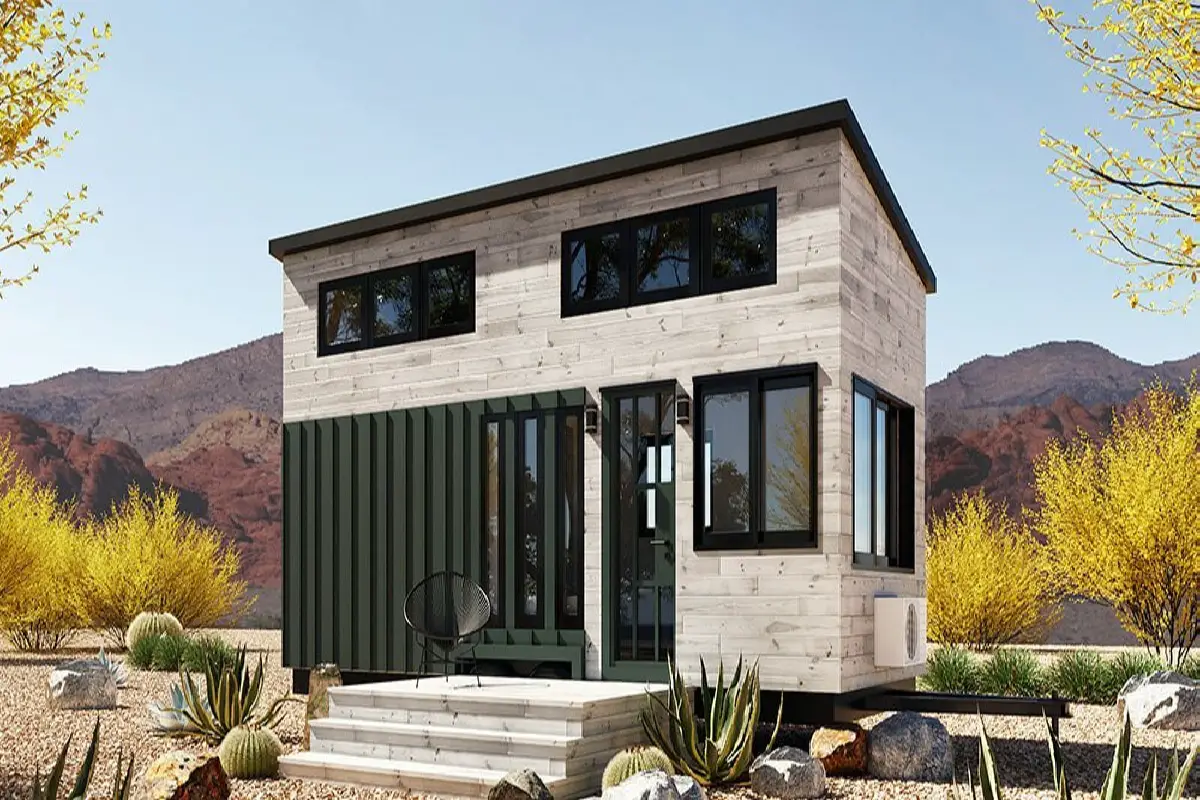
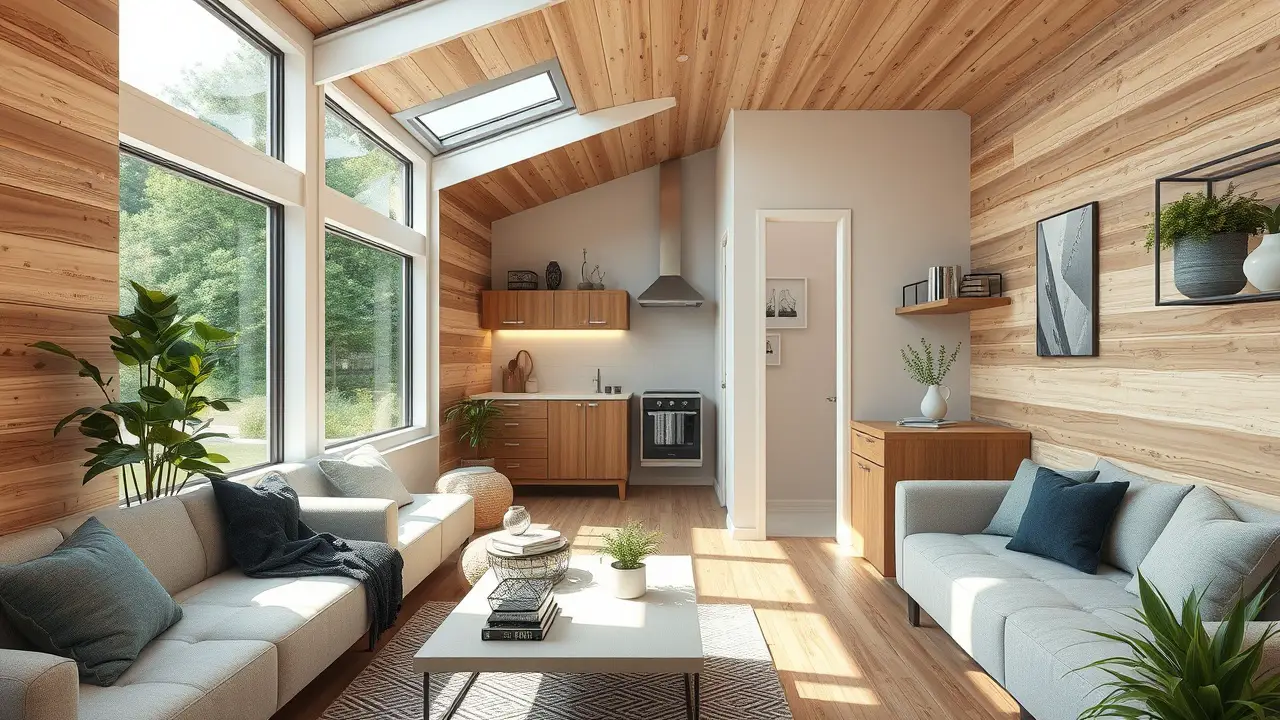
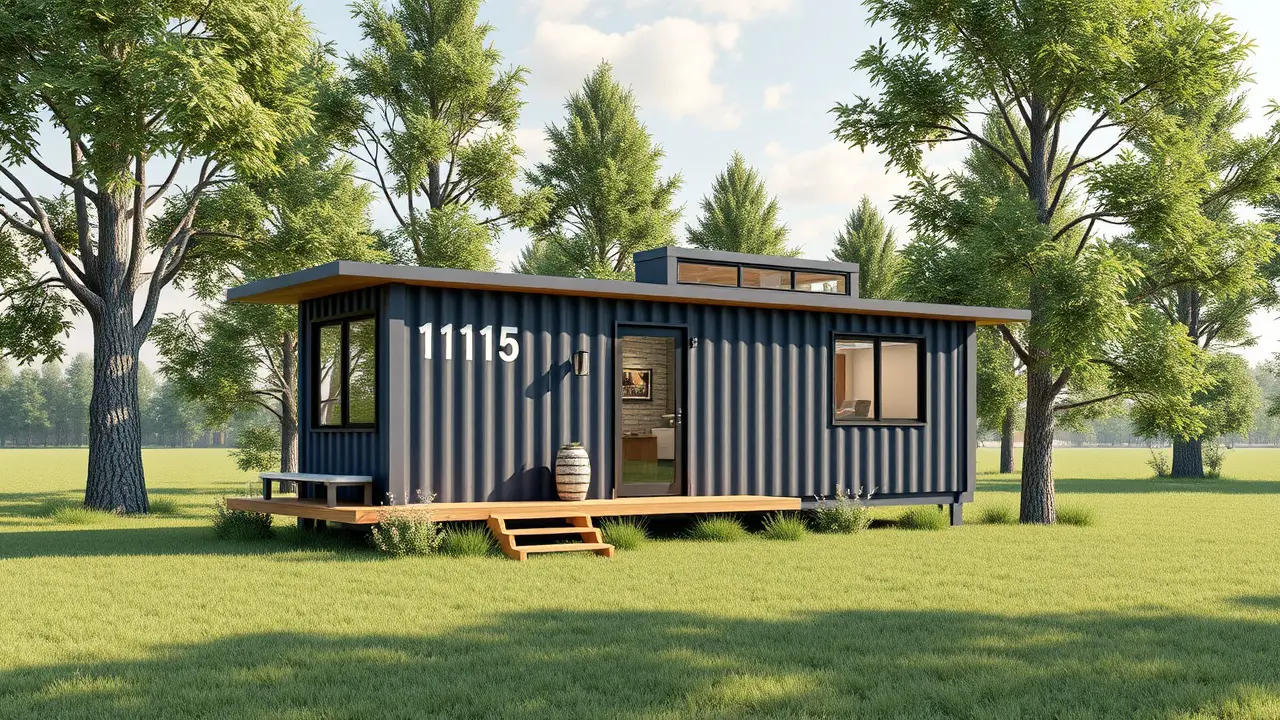
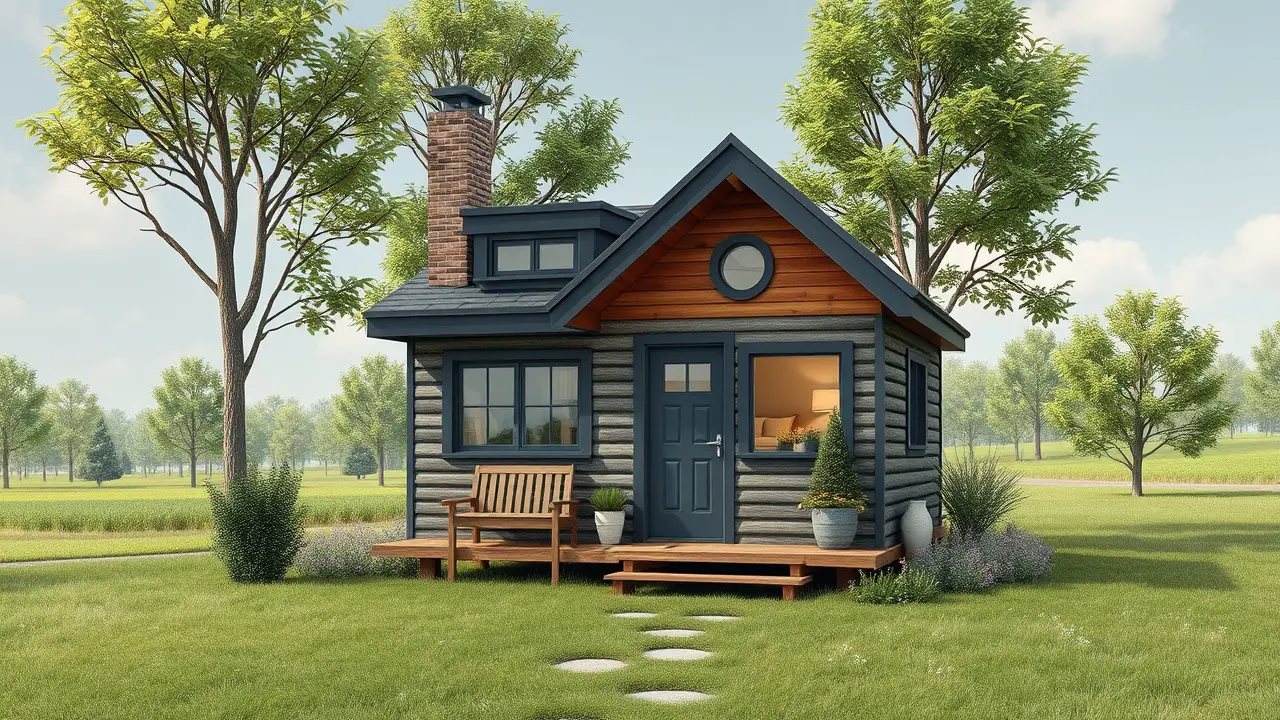
Leave a Reply